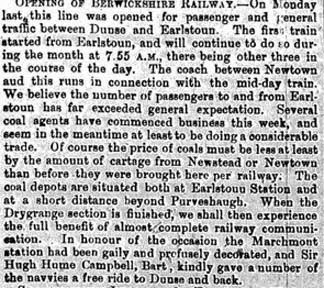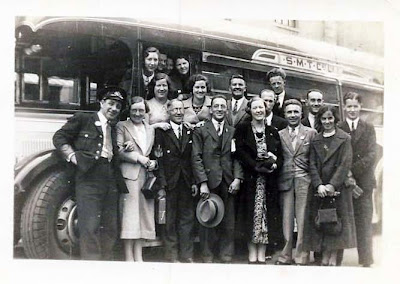A summer events theme with photographs from the Auld Earlston Collection,
Not in procession, but Earlston Clown Band is here appropriately dressed and ready to take part in the Galashiels Historical Peace Pageant of summer 1919 - a parade of bands and ex-servcemen, with wreath laying, was followed by a fancy dress show. picnic and sports. A seven minute vintage film of the event is held at Scottish Film Archive.
A year earlier in 1918, the band were dressed to take part in the Galashiels Cycle Parade.
In 1934 the Pageant of Ercildoune took place on the nearby estate of Carolside. The costumed outdoor event portrayed in drama, music and dance some of the scenes from Earlston and Border history, produced by Earlston Girl's Club, and directed by Colonel Ferguson. Below - the arrival with her retinue of of Mary Queen of Scots.
The Coronation of George VI in 1937 was celebrated in this float with the leading figure Britannia.
On to Earlston Civic Week which began in 1972, with fun events, races, social get togethers, and concerts, culminating on the Saturday in the fancy dress parade, torchlight procession and fireworks display - now about to celebrate its 43rd anniversary.
To end, two of the oldest photographs in the Auld Earlston collection - a parade of soldiers off to camp in July 1907 and a year later the Pipe Band led a procession along Earlston High Street to mark the "Semi-Jubilee" of the local Temperance Society.

Thank you to everyone
who has donated or loaned old photographs for scanning.
who has donated or loaned old photographs for scanning.
Auld Earlston welcomes all contributions on the village's past -
contact us on auldearlston@aol.com or via the comments box below.
contact us on auldearlston@aol.com or via the comments box below.
***************





























